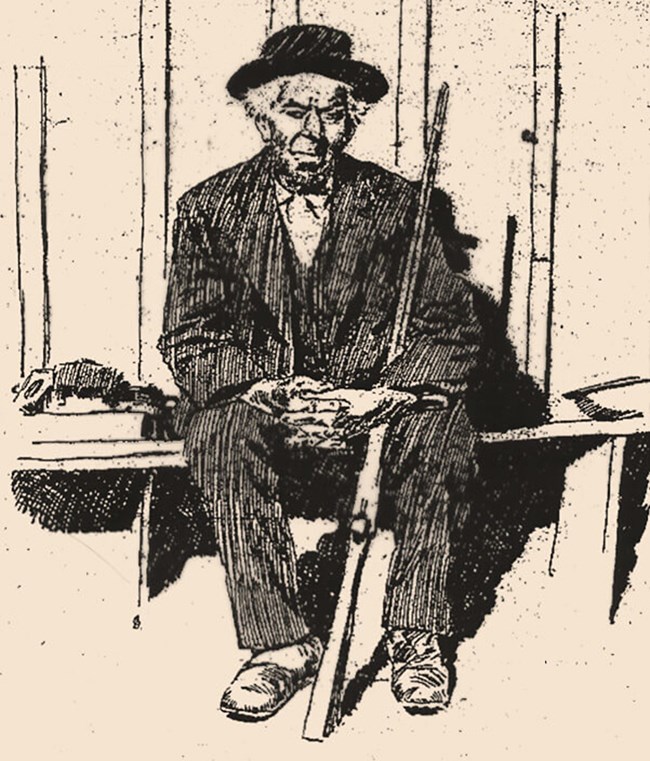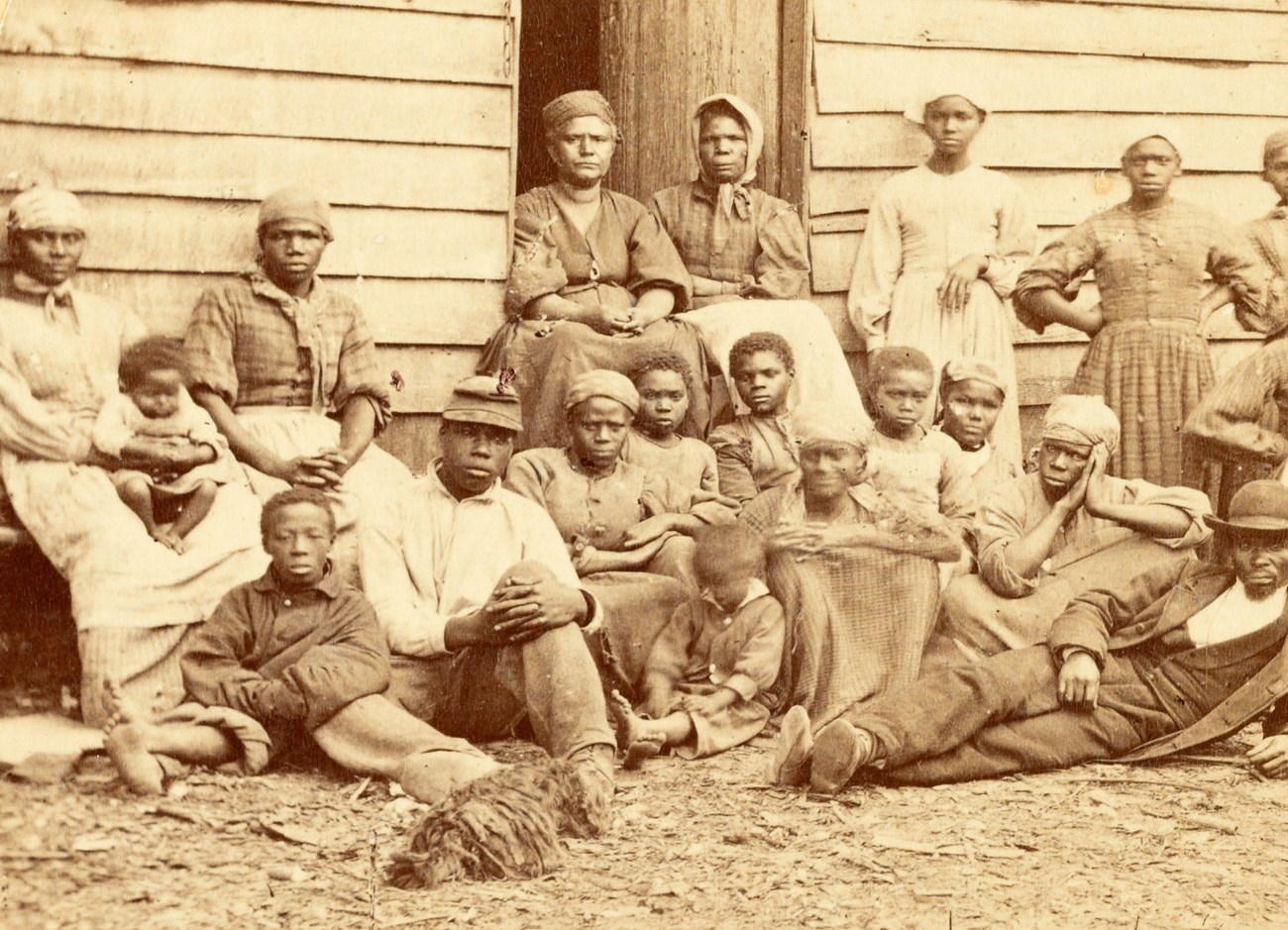Last updated: August 15, 2022
Article
African Americans during the Gettysburg Campaign

The Philadelphia Times, January 12, 1900.
In June 1863, fifteen-year-old Tillie Pierce observed Gettysburg’s color line. White civilians departed all around her in the face of Robert E. Lee’s Confederate invasion, eager to save their lives and property, while African Americans fled en masse, fearing enslavement. The flight of Gettysburg’s black population seized Pierce’s attention, although she offered little sympathy: “They regarded the Rebels as having an especial hatred toward them, and believed that if they fell into their hands, annihilation was sure,” she wrote. “I can see them yet; men and women with bundles as large as old-fashioned feather ticks slung across their backs…Children also, carrying their bundles, and striving in vain to keep up with their seniors.”[1] The threat of enslavement did not bear on Pierce the way it bore on the black community. While Pierce evoked disbelief, Gettysburg’s black population made its escape. Abraham Brian, a farmer on Cemetery Ridge, left with his family. Basil Biggs, a veterinarian, made a hasty retreat, as did Owen Robinson, a retailer of oysters and ice cream. They knew better than Pierce, better than anyone, that Gettysburg was not safe for people of color.
In nearby Chambersburg, cavalry units kidnapped African Americans, forcing others into flight or hiding.[2] Rachel Cormany watched from her step “as they were driven by just like we would drive cattle.” The cavalry units “were hunting up the contrabands & driving them off in droves. O! How it grated on our hearts to have to sit quietly & watch such brutal deeds,” she confessed. “I saw no men among the contrabands—all women and children.”[3] Jacob Hoke described a similar scene. The African Americans who remained in Chambersburg “sought concealment in the growing wheat fields about the town. Into these the cavalrymen rode in search of their prey, and many were caught.” Unable to accept what he was witnessing, Hoke used the influence of a friend to secure the release of several prisoners.[4]
The “contrabands” Cormany mentioned were freedom seekers who sought refuge with Union forces, sometimes without success. The limited freedom one obtained as a contraband—itself a term that emphasized one’s status as property—could be revoked if a soldier decided to aid a slaveholder. That changed when Lincoln issued the Emancipation Proclamation. It stipulated that freedom seekers hailing from Confederate states could not be re-enslaved without disobeying both military and civilian policy.[5] The “contrabands” were now free men and women, at least on paper, who could use their labor against former enslavers. Together, Union soldiers and African Americans formed a tenuous alliance. It was “never an easy collaboration,” being “full of drawbacks” and “even tragedies,” but it was a step forward.[6]

Library of Congress
The Union’s adamant refusal to remand African Americans to slavery prompted retaliation in Pennsylvania.[7] Cavalrymen pillaged Chambersburg, Mercersburg, and Greencastle for contrabands, threatening to “burn down every house which harbored a fugitive slave, and did not deliver him up within twenty minutes.” Dr. Phillip Schaff of Mercersburg condemned their actions, being “positively assured that two or three [abductees] were born in this neighborhood,” and therefore free.[8] When Schaff confronted a soldier, asking if he did not “feel bad and mean in such an occupation,” the soldier said “he felt very comfortable [because] they were only reclaiming their property which we had stolen and harbored.”[9] It hardly mattered to the soldier that the people in his grasp were legally free. He assumed they were slaves simply because they were black.[10]
This perceived correlation between blackness and slavery drove African Americans from Gettysburg. Brian, Biggs, and Robinson did not vacate their homes or endanger their families on a northward journey because they were contrabands. They left because Confederate soldiers could say they were and treat them accordingly. Slave hunters had already crossed the border before the war to kidnap free people of color. Abraham Brian’s former wife, Catherine Payne, had been taken from her home with her children, and only escaped after a series of legal battles.[11] Pennsylvania’s creed of free labor did not guarantee their safety.
The decision to leave must have been painful. The dust kicked into the air by fleeing neighbors blurred what they left behind: friends, animals, houses. Robinson probably felt melancholy when he left Gettysburg. It had become his home after a childhood spent in slavery. He made friends with its inhabitants, including Charles McCurdy, a young boy who thanked him for the occasional scoop of free ice cream.[12] Brian had acquired his own property and raised a family by its fireside. When everything was over, would he have a home to return to? Brian did not know, but it was a risk he and so many others had to take. Living in a town on the border between slavery and freedom was simply too dangerous.

Library of Congress
